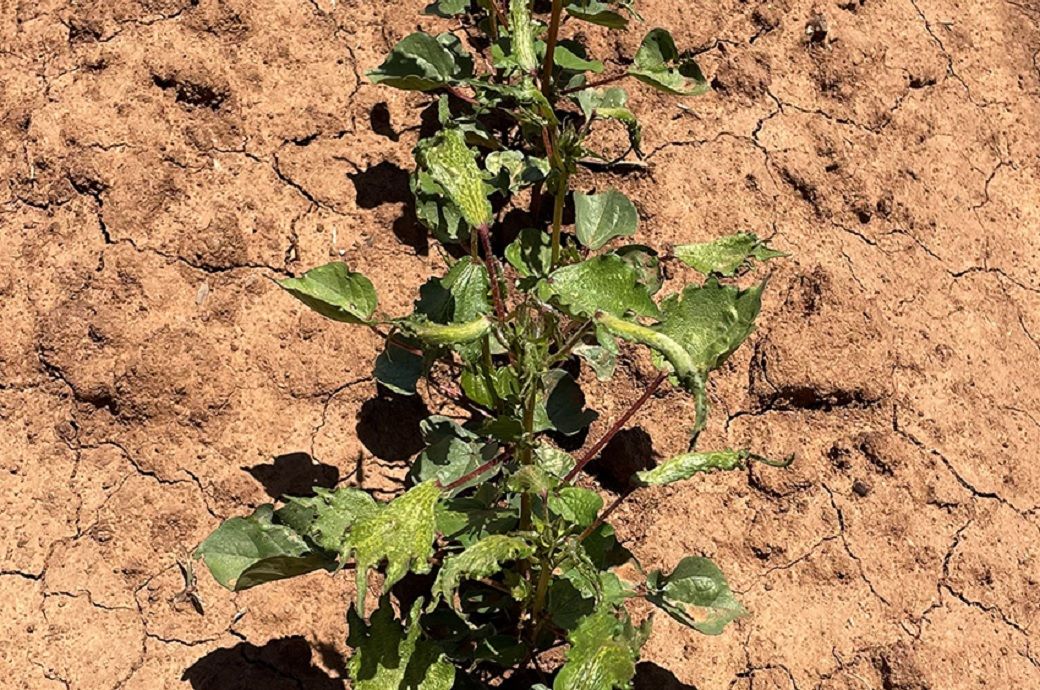
Agronomist Emma Ayliffe, from Summit Ag in Griffith visited three farms between Lake Cargelligo and Condobolin in Centra West NSW, reviewing three separate incidents ranging from minor damage to severe, Cotton Australia said in a press release.
“Some of the crops have been hit hard but the positive is that it’s only early days and they may recover, avoiding a total loss. We were hit hard last season, and we are all sick of it. It’s got to stop. We can’t afford a repeat of the damage and if everyone uses the tools and resources available, this can all be avoided,” Ayliffe said.
There have also been reports from Griffith and near Moree with Cotton Australia (CA) regional managers concerned that conditions may lead to an escalation of damage and reports. The reports, combined with the recent rains boosting weed growth, indicate spraying activity is about to ramp up significantly.
CA policy officer for stewardship Doug McCollum said there is a perfect storm brewing, and everyone needs to take extra precautions given the extreme conditions. “With hot conditions, growers might be tempted to delay spraying during the day to avoid evaporation and instead spray at night. Unfortunately for growers the inversion conditions are mostly prevalent during nighttime and that could lead to unintended drift over a large area.”
In New South Wales the EPA has signalled they will not hesitate to take action against anyone spraying pesticides irresponsibly or deliberately causing harm. They have stepped up site visits with recent pesticides campaigns in Moree, Narrabri and Walgett, and are undertaking active investigations in Carrathool, Forbes, Griffith, Narromine, Moree, Warren and Yallaroi.
McCollum urged all those spraying their crops to fully utilise the full complement of tools, including Weather and Networked Data (WAND) towers and SataCrop this season to avoid spray drift, enabling the rapid detection of hazardous conditions and inversions, potentially preventing millions of dollars’ worth of lost production.
In March this year both the Grains and Cotton Research and Development Corporations in conjunction with Goanna Ag, confirmed all 100 WAND spray hazard identification towers were up and running stretching from Emerald in Queensland to the Victorian border.
Over 2,000 cotton and grain growers and spray operators have registered to use WAND towers to identify, in real time, whether a hazardous inversion is present helping their decision to spray, or more importantly when not to spray.
WAND is a spray drift hazardous weather warning system that provides real-time weather data for growers and spray operators. Utilising remote sensing capability and new proprietary software, the towers provide growers and spray contractors with a two-hour forecast of weather data that is updated every 10 minutes.
SataCrop can map all crop types, including cotton, grains and tree crops. Growers log in and plot the location of fields they have planted with different crops each season allowing others to review the site when planning spray applications to see the location of potentially sensitive neighbouring crops, the release added.
“It’s fantastic having these tools and this year if people use them, remain vigilant around spray and wind conditions, and strictly adhere to the instructions on the label then we can avoid tens of millions worth of damage,” McCollum said. “The vast majority are doing the right thing and those who flagrantly break the rules can expect to be caught.”
Fibre2Fashion News Desk (KD)